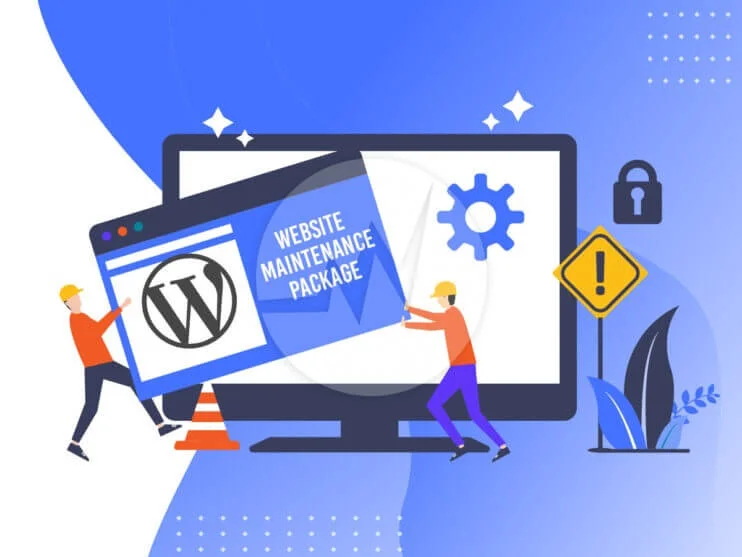When it comes to website performance optimization, speed is a pivotal factor that can make or break your site’s user experience, conversion rates, and search engine rankings. Even a one-second delay can result in a 7% decrease in conversions, which can significantly impact your revenue. A fast-loading website, on the other hand, can improve user engagement, increase conversions, and boost your online visibility. By prioritizing speed, you can create a seamless and enjoyable user experience that drives sales and revenue growth. As you explore ways to optimize your website’s performance, you’ll discover the many ways speed can benefit your business.
Benefits of Fast Website Loading
By prioritizing a speedy website loading time, you can reduce bounce rates and create a positive first impression on your users. When your site loads quickly, you’re telling your users that you value their time and care about their experience.
A fast website speed test result can lead to a better user experience, which in turn can improve your conversion rate. In fact, a one-second delay in loading time can result in a 7% decrease in conversions. On the other hand, improving your Core Web Vitals can have a significant impact on your revenue, with some case studies showing increases of over 50%.
Quick loading times also positively impact your brand perception, influencing user trust and engagement. When your site loads quickly, users are more likely to stay and explore, leading to increased engagement and a stronger connection with your brand.
Factors Affecting Website Speed

Now that you’ve seen the benefits of fast website loading, let’s explore the factors that affect your website’s speed.
Your site’s performance is influenced by a combination of network and hosting factors, such as the location of your hosting server and the quality of your network connection.
Additionally, the weight and resources required by your webpage, including images, scripts, and other media, play a significant role in determining how quickly your site loads.
Network and Hosting Factors
Your website’s speed is heavily influenced by network conditions and the quality of your internet service provider (ISP), which can either enhance or hinder the user experience.
When your users are far from your hosting location, network latency can become a major issue, leading to slower loading times and frustrated users.
To combat this, you can leverage Content Delivery Networks (CDNs) that cache your resources in multiple locations worldwide, ensuring your content is delivered quickly to users regardless of their location.
Page Weight and Resources
The size and number of resources on a webpage, including JavaScript files, images, and other media, have a significant impact on its overall weight and loading time. The more resources you have, the heavier your webpage becomes, which can slow down your website loading times. This is especially true if you have large resources like high-definition images or numerous JavaScript files.
Here are some key factors that contribute to page weight and impact website loading times:
- The size of resources: Larger files take longer to load, increasing page weight and slowing down your website.
- Network latency: The farther away your hosting location is from your users, the longer it takes for resources to reach them.
- Number of round trips: The more resources you have, the more requests are made to your server, increasing the time it takes for your webpage to load.
Measuring Website Performance Speed

As you work to optimize your website’s performance, you need to measure its speed to understand where improvements are needed.
You’ll want to familiarize yourself with key website performance metrics, such as load time, Time To First Byte (TTFB), and Round Trip Time (RTT), to identify areas for enhancement.
Website Performance Metrics
Measuring website performance speed relies heavily on a set of key performance indicators that help identify areas for optimization. When you’re looking to enhance your website’s speed, you need to understand which metrics to focus on.
Here are some key performance indicators to take into account:
- Load Time: This measures the time taken for a webpage to fully appear in the browser, influencing user experience significantly.
- Time to First Byte (TTFB): This measures the server response time, which greatly affects overall page speed.
- Page Size: Larger resources can slow down the loading process, making page size an essential metric to monitor.
Tools for Speed Measurement
To understand your website’s performance clearly, you’ll need to utilize specialized tools created to measure speed, identify areas for enhancement, and offer actionable recommendations.
When it comes to enhancing your website’s speed, you’ll want to use tools that provide an in-depth analysis of your website’s performance metrics. Google PageSpeed Insights and WebPageTest are two excellent tools that provide detailed metrics on your website’s speed performance, including load time, page size, and server response time.
With these tools, you’ll gain valuable insights into your website’s page load times, helping you pinpoint areas for enhancement. Google’s Lighthouse tool takes it a step further, offering suggestions for optimizing your website’s speed based on performance metrics.
If you wish to test your website’s speed from different locations and browsers, WebPageTest is your preferred tool. Furthermore, monitoring tools like GTmetrix and Pingdom offer detailed insights into specific areas for enhancement in your website’s speed.
Speed Analysis Techniques
You can analyze your website’s performance speed using various key metrics, including load time, page size, Time To First Byte (TTFB), number of round trips, and Round Trip Time (RTT). These metrics provide valuable insights into your website’s performance, helping you identify areas for improvement.
When it comes to web performance, every significant second counts. A slow-loading website can lead to high bounce rates, poor user experience, and ultimately, a loss in revenue.
To get started with speed analysis, focus on the following key metrics:
- Load time: This measures how quickly a webpage appears in the browser, affecting user experience and retention.
- Time To First Byte (TTFB): This measures server response time, essential for optimizing website speed.
- Page size: This impacts loading speed, with larger resources like JavaScript files and images slowing down performance.
Impact of Speed on User Experience

A slow-loading website can frustrate users, trigger stress responses, and ultimately undermine the overall user experience. You’ve likely been there – stuck waiting for a page to load, your patience wearing thin as the seconds tick by.
The impact on user experience is real: research shows that 40% of users will bail on a website if it takes more than 3 seconds to load. Website owners can’t afford to ignore this stark reality.
On mobile devices, delayed page speed can be especially aggravating, as limited CPU power and memory amplify wait times. Poor performance conditions can lead to user abandonment and decreased engagement with the site. That’s why speed is essential for delivering a seamless and enjoyable user experience.
You want to create an environment where users feel in control and engaged, not stuck in limbo waiting for your content to load. By prioritizing page load speed, you’re prioritizing your users’ satisfaction – and that’s a recipe for long-term success.
How Speed Affects SEO Rankings

Frequently overlooked in SEO strategies, website speed plays an essential role in determining search engine rankings and can greatly impact your site’s online visibility. When your web pages load quickly, you’re more likely to rank higher in Google search results, which can drive more organic traffic to your site.
On the other hand, slow loading times can negatively impact your SEO rankings, making it harder for users to find you online.
Here are just a few ways speed affects your SEO rankings:
- Google prioritizes fast-loading websites in search rankings to enhance user experience.
- Slow loading times can lead to lower SEO rankings and decreased organic traffic.
- A fast website speed can result in higher search engine rankings and improved visibility.
Website Speed and Conversion Rates

As you focus on optimizing your website’s performance, you can’t ignore the direct link between speed and conversion rates.
Even a one-second delay can lead to a 7% decrease in conversions, which is a significant blow to your business.
Speed Impacts Conversion Rates
Improving your website’s loading speed can have a significant impact on conversion rates, with even a single second of delay potentially reducing conversions by 7%. This is especially important in the e-commerce world, where slow-loading websites can lead to frustrated customers and lost revenue. Remember, Speed Matters when it comes to providing an ideal user experience.
You might be wondering how a slight delay in page loading time affects your business. Here are a few key takeaways:
- A one-second delay in page load time can result in a 7% decrease in conversion rates.
- E-commerce sites can experience significant revenue losses due to delays in loading speed.
- Slow-loading websites are penalized by search engines, leading to loss of customers and revenue.
Optimize for User Experience
Your website’s speed plays an essential role in shaping user experience, directly influencing conversion rates and ultimately impacting your bottom line. When your site loads quickly, you’ll see higher conversion rates and a significant boost in revenue. In fact, a one-second delay can lead to a 7% decrease in conversions. That’s why it’s crucial to prioritize performance optimization to ensure your site loads in under 3 seconds, as 40% of users will leave if it takes any longer.
To optimize for user experience, focus on improving your website’s speed. Rakuten, for example, experienced a 53.37% revenue increase by optimizing for Core Web Vitals. Similarly, Vodafone saw an 8% increase in sales after improving their Largest Contentful Paint (LCP) by 31%.
By prioritizing website speed, you’ll not only improve user experience but also increase conversion rates. Take redBus, which saw a 7% increase in conversions after focusing on website speed. By making performance optimization a priority, you can boost sales, improve user experience, and ultimately drive revenue growth.
Fast Sites Boost Revenue
By prioritizing website speed, you can capitalize on its direct impact on revenue, as faster-loading sites have been shown to increase conversion rates and ultimately drive business growth.
Even a one-second delay can cause a 7% decrease in conversions, resulting in lost sales and revenue. To avoid this, you can optimize your website’s performance using speed tools and best practices.
Here are some key takeaways from companies that have prioritized speed:
- Rakuten 24s experienced a 53.37% revenue increase by optimizing for Core Web Essentials, showing the direct link between speed and revenue.
- Vodafone’s 31% improvement in Largest Contentful Paint (LCP) led to an 8% boost in sales, emphasizing the correlation between speed metrics and revenue growth.
- Optimizing website performance can lead to a 7% increase in sales, as seen in the case of redBus through their performance enhancement efforts.
Optimizing Images for Faster Loading

Optimizing images is vital for accelerating website loading times and should be a key focus area for anyone looking to improve their site’s overall performance. As you aim for a seamless user experience, you’ll want to prioritize image optimization to enhance your site’s loading speed. This is especially important for mobile users, who expect fast and efficient browsing experiences on their devices.
When optimizing images for the web, it’s all about striking a balance between quality and file size. Compressing images without compromising their quality can significantly reduce file sizes, leading to faster loading times.
Using responsive images and lazy loading techniques also helps optimize image loading based on device size and user interactions. Additionally, ensuring that images are properly formatted in the right file format (JPEG, PNG, SVG) can further improve loading speed and performance.
Techniques for Reducing Load Time

Load time reduction techniques play an essential role in enhancing website performance, and employing the right strategies can greatly enhance the speed at which your site loads for users.
One key factor is mobile page speed, as it directly impacts the user experience. To boost speed, consider the following techniques:
- Minifying CSS and JavaScript files can significantly cut down load times by eliminating unnecessary characters and white spaces.
- Enabling browser caching allows frequently accessed resources to be stored locally on users’ devices, resulting in quicker load times.
- Reducing multiple HTTP requests is vital, as each request adds overhead and delays loading speed. Remove unnecessary JavaScript and minimize the number of requests made.
Best Practices for Website Performance

To achieve excellent website performance, you must adopt a range of best practices that enable your site to function at its best, ensuring seamless and speedy user experiences.
One essential strategy is implementing browser caching to reduce data transfer and speed up page loads. Additionally, minimize the use of external scripts to prevent delays in loading times.
Removing render-blocking JavaScript is another game-changer in website optimization, as it can greatly improve load times. Besides, limit the use of redirects to avoid unnecessary delays in page loading. This will help create a faster and more direct path for users to reach your site.
When it comes to performance optimization, don’t forget to minify CSS and JavaScript files to reduce load times and bandwidth usage. The result? Improved page load times that will positively impact your users’ experience on your site.
Advanced Methods for Speed Optimization

By utilizing cutting-edge techniques, you can elevate your website’s speed to the next level, guaranteeing that your users have a smooth and lightning-fast experience.
As you explore advanced methods for speed optimization, you’ll uncover a variety of innovative strategies to improve performance.
Some of these techniques include:
- Lazy loading: postponing the loading of non-essential content until it’s needed, decreasing initial page load times and enhancing overall speed.
- Load balancing: efficiently spreading traffic across multiple servers to avoid bottlenecks and secure quicker performance.
- Leveraging a static site generator: pre-rendering content to lessen server load and boost performance.
To Recap
You’ve made it to the finish line, and the prize is a lightning-fast website that leaves the competition in the dust.
A speedy site is the key to accessing a treasure trove of benefits, from higher search engine rankings to happier users and increased conversions.
By implementing the techniques outlined here, you’ll be waving goodbye to slow load times and hello to a seamless user experience that will leave your visitors keen for more.










